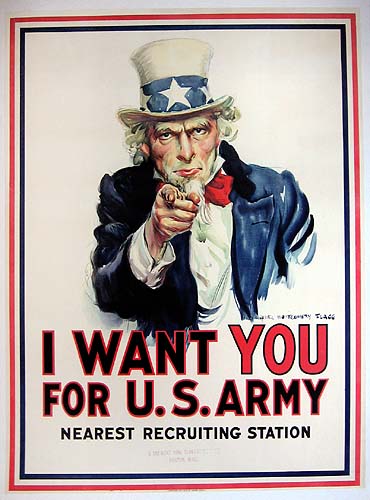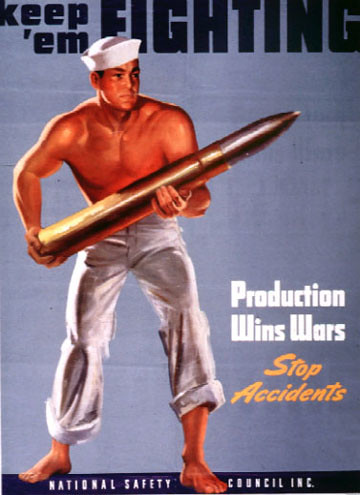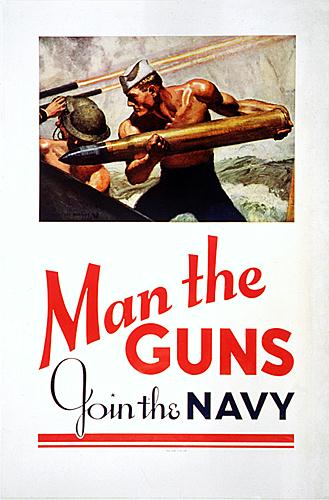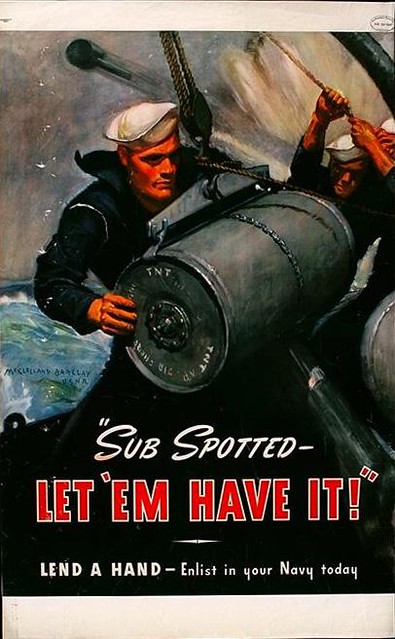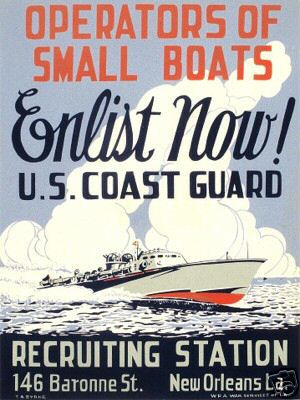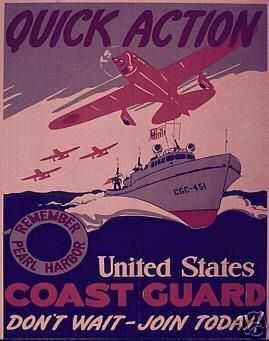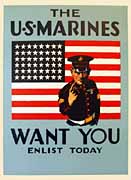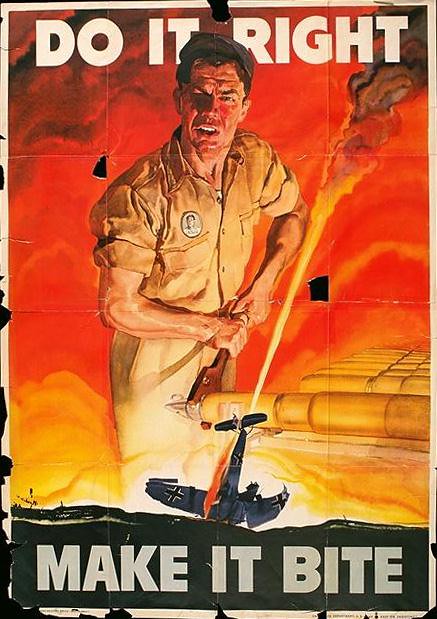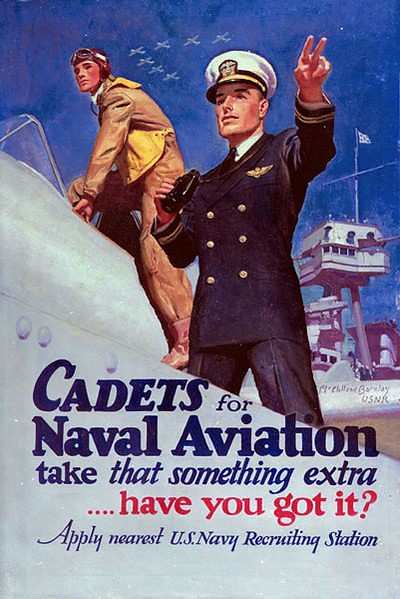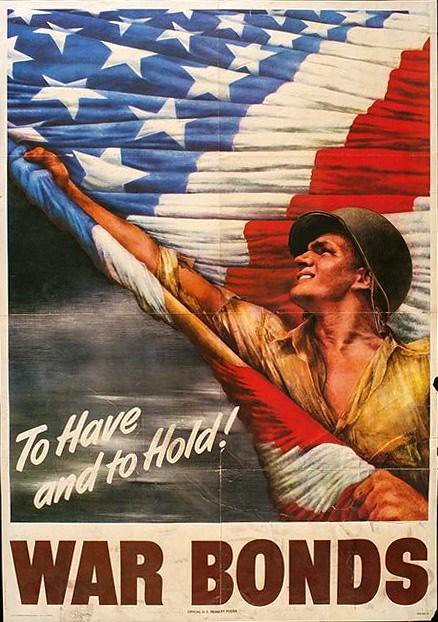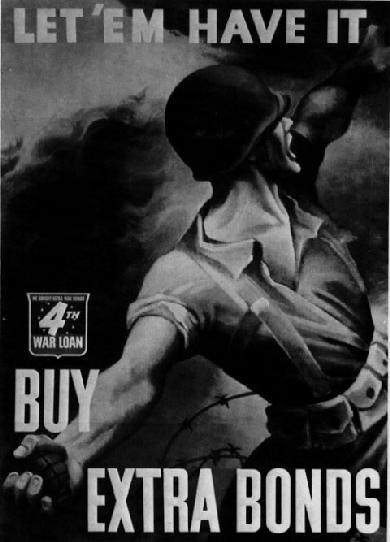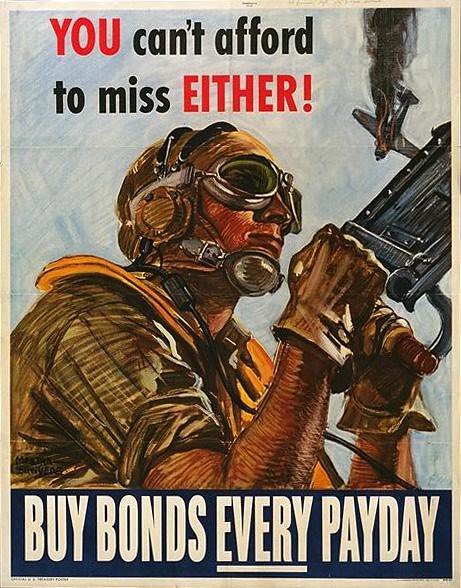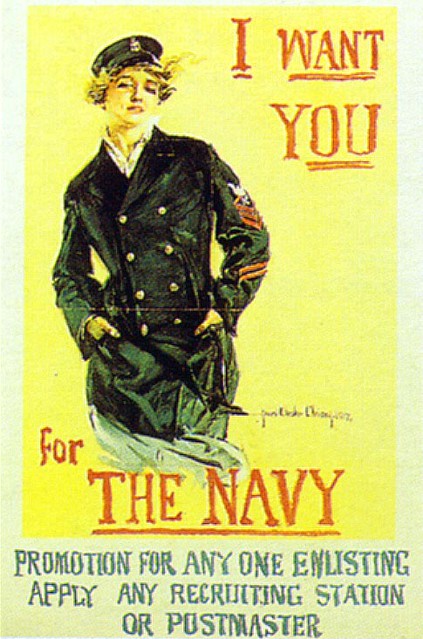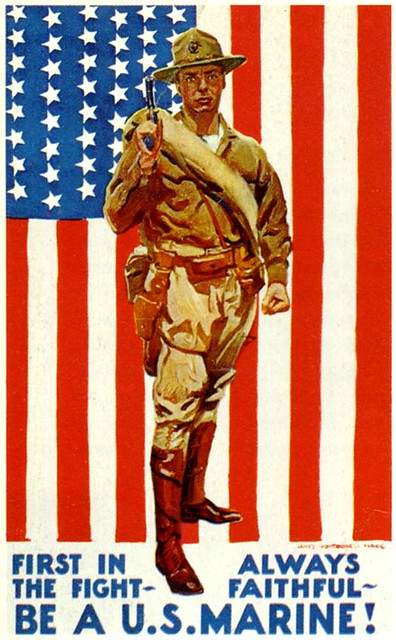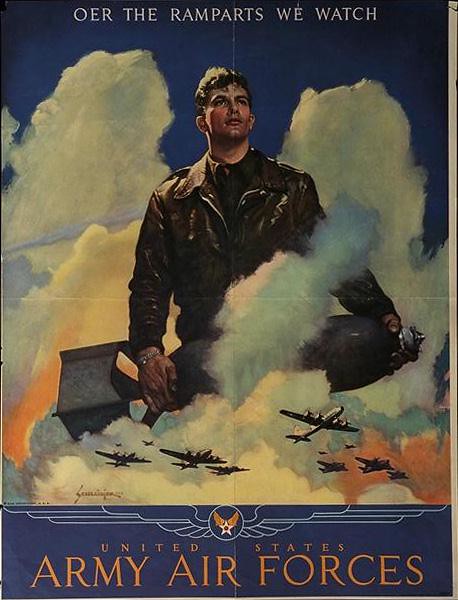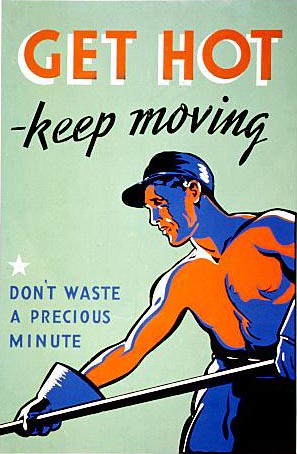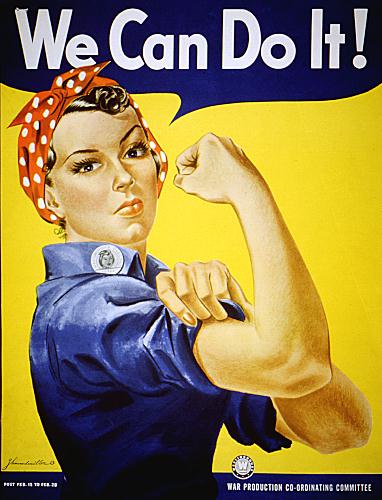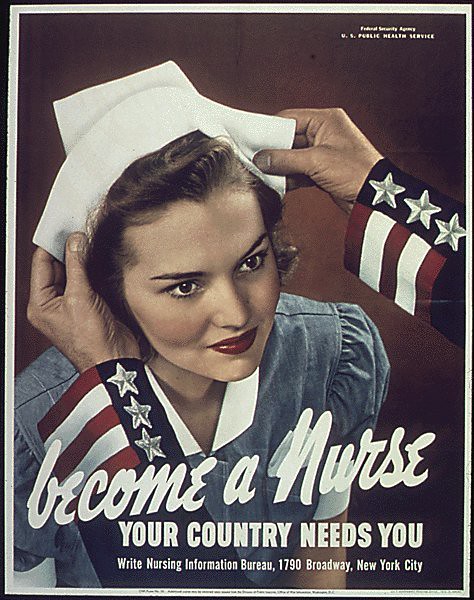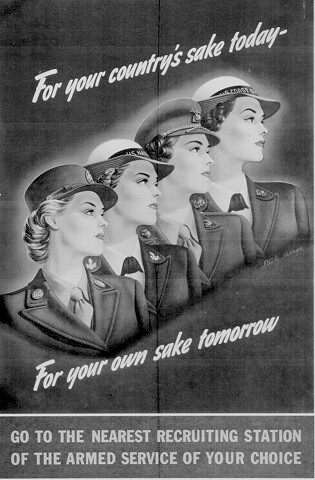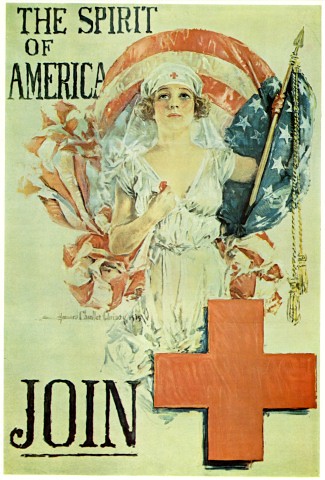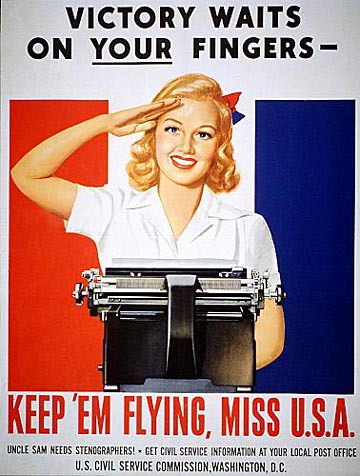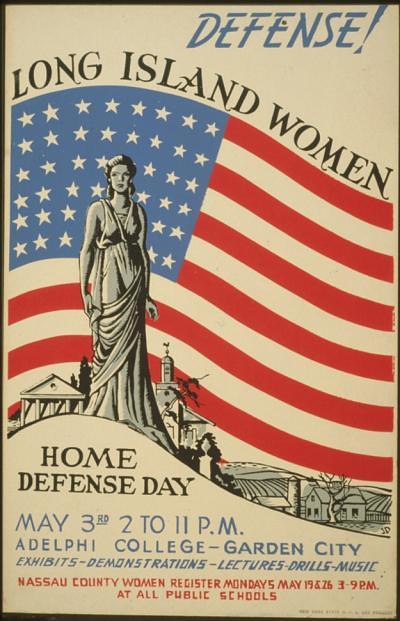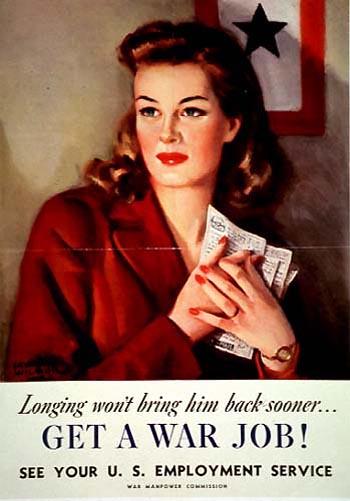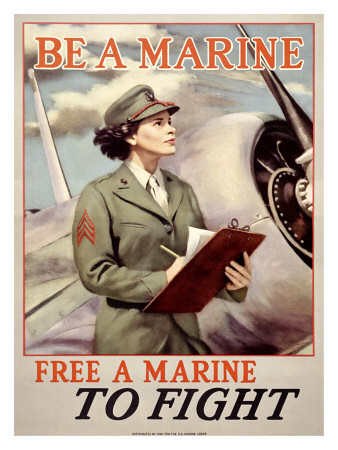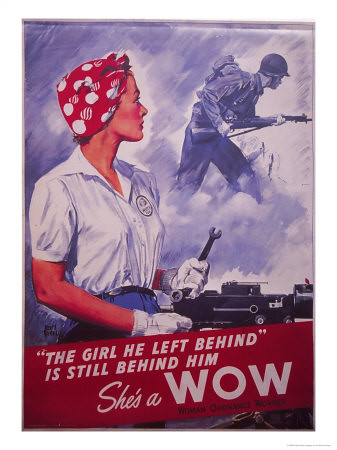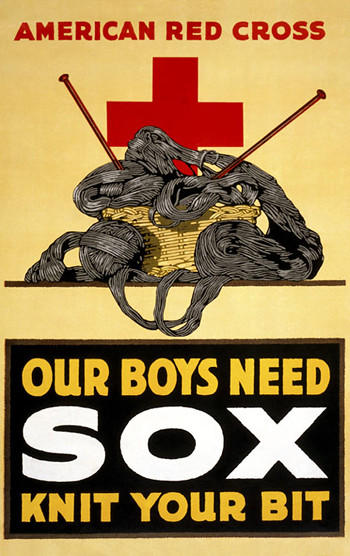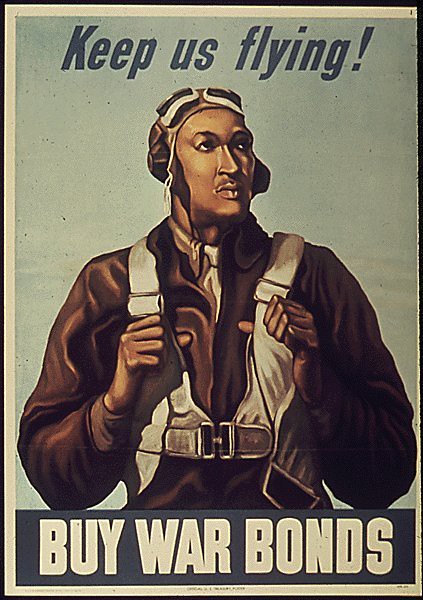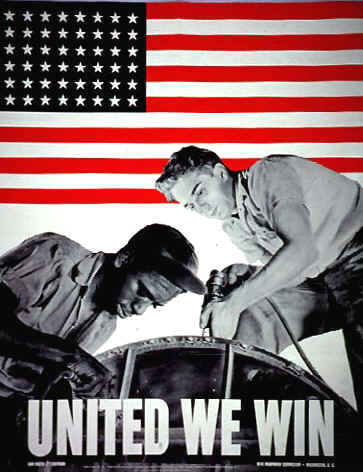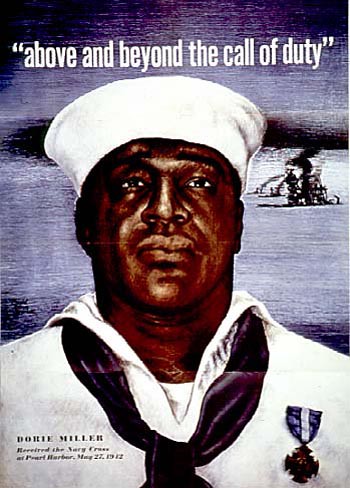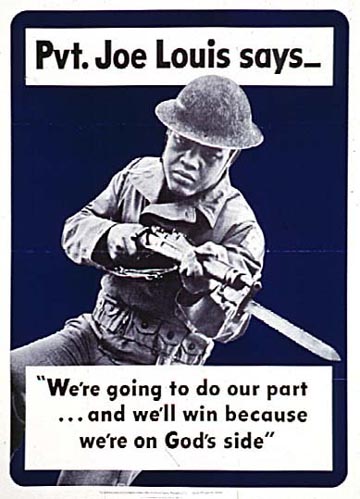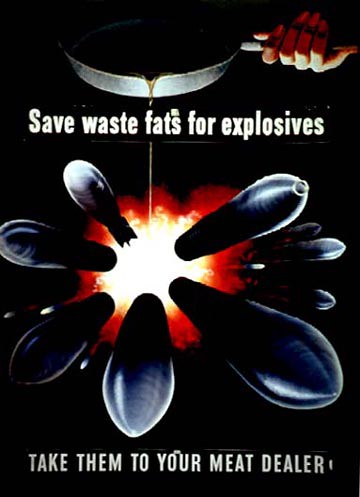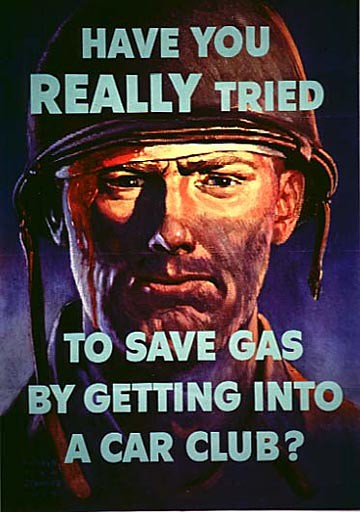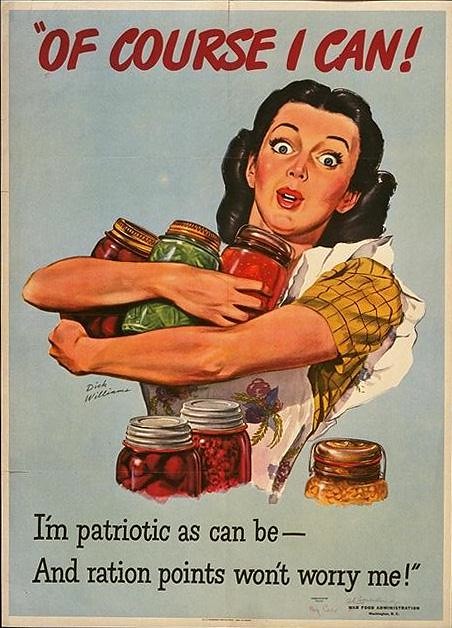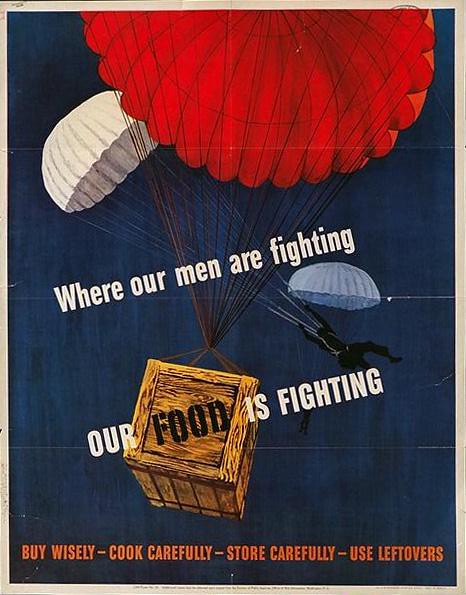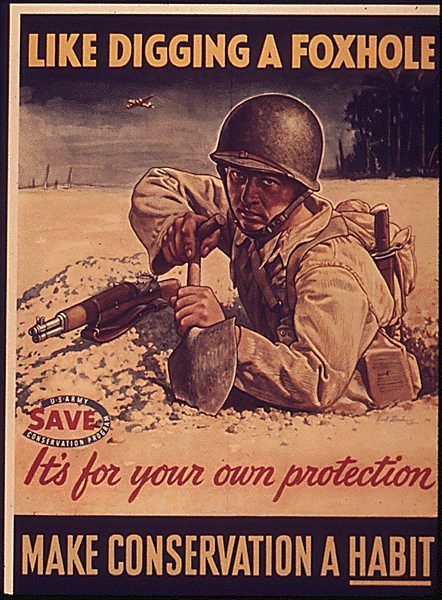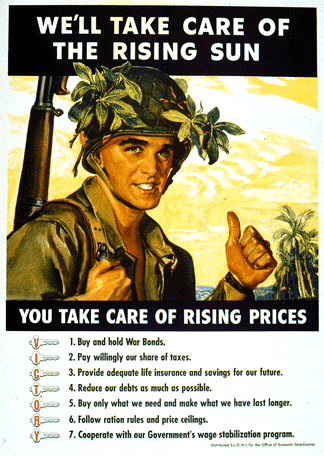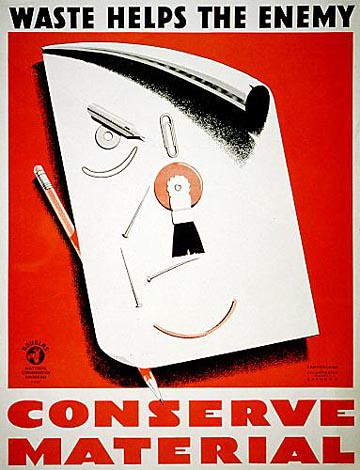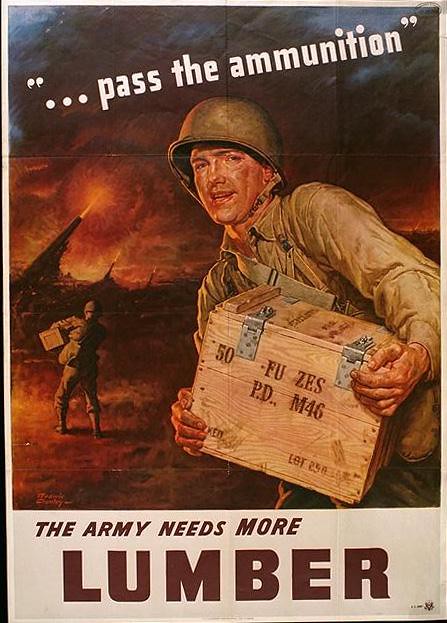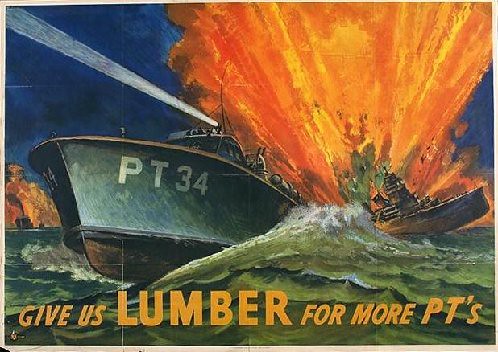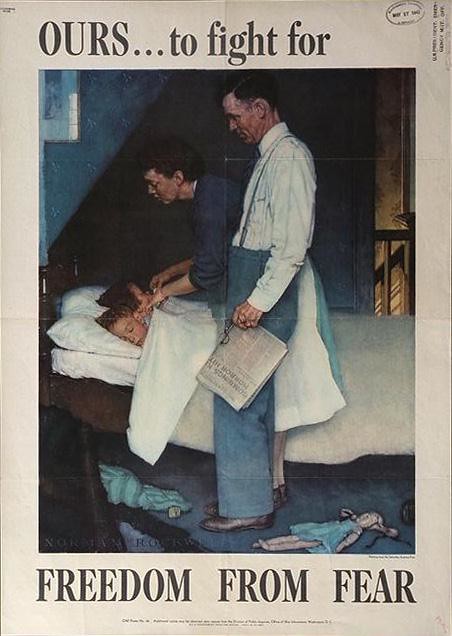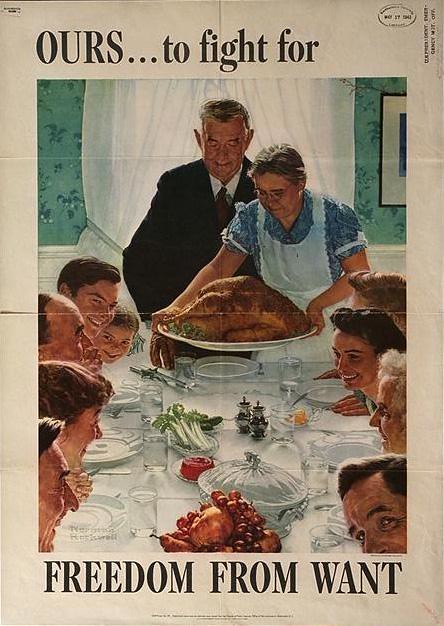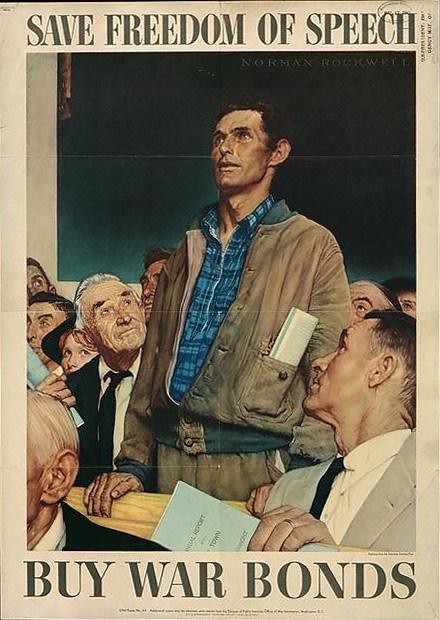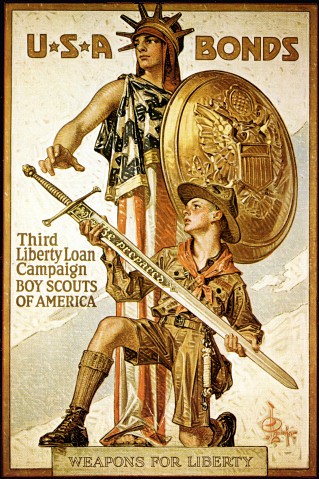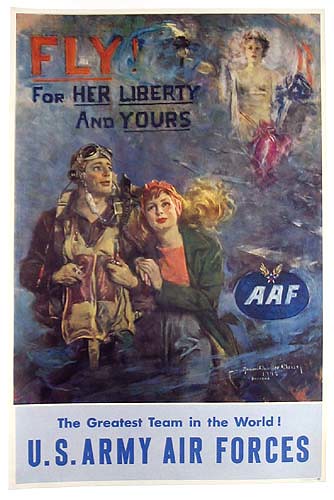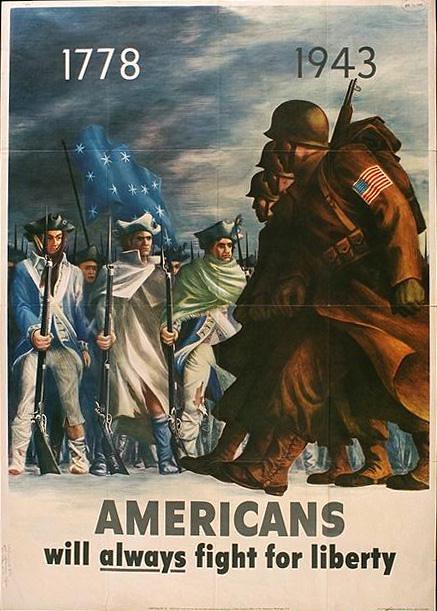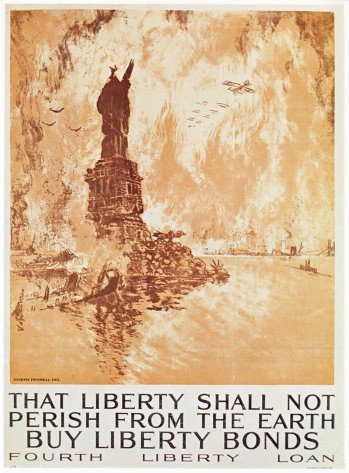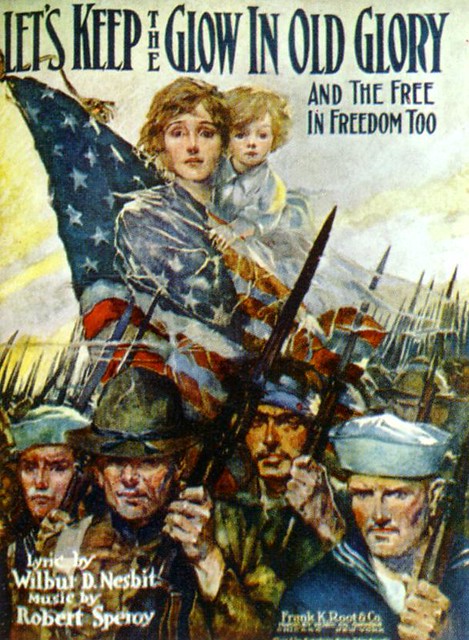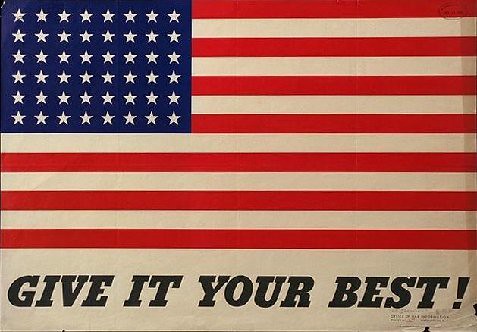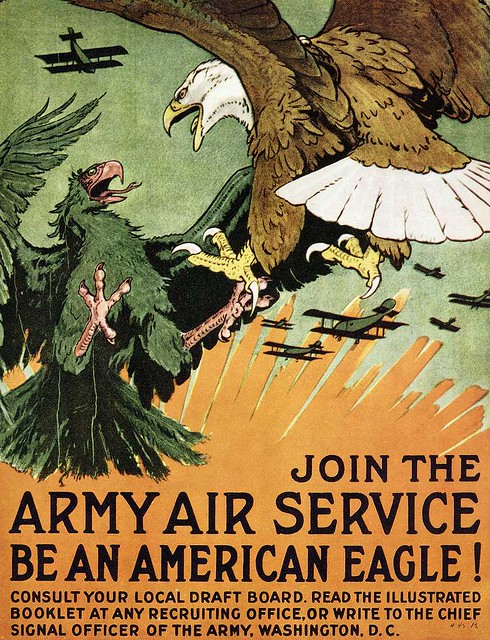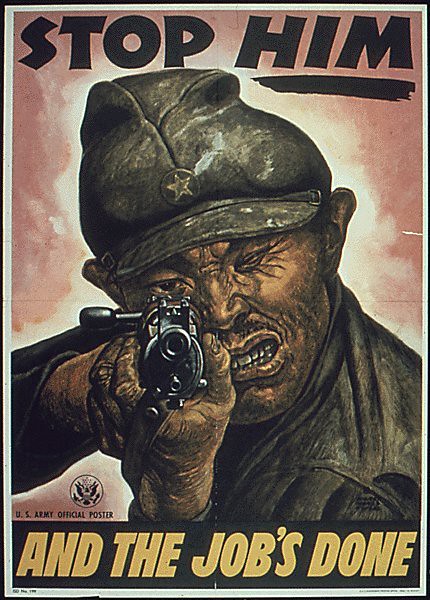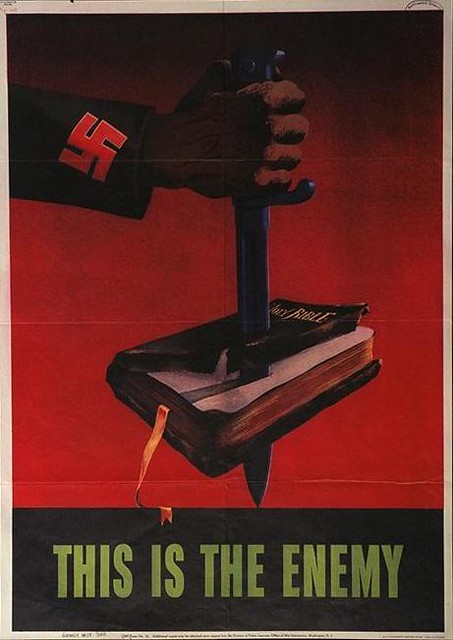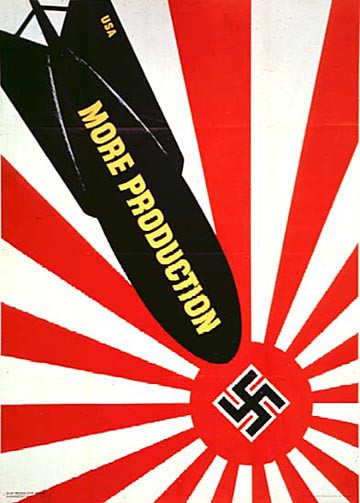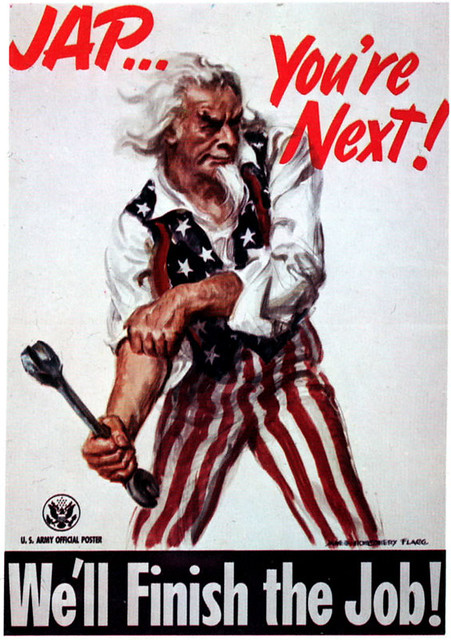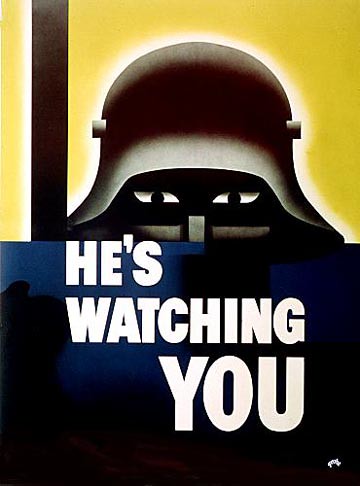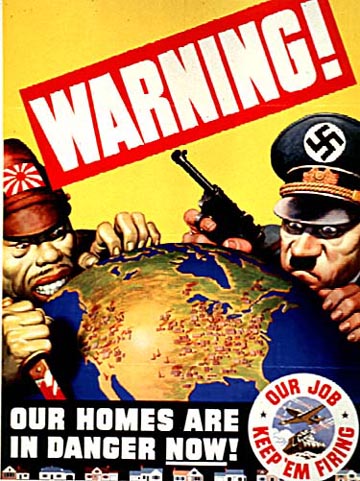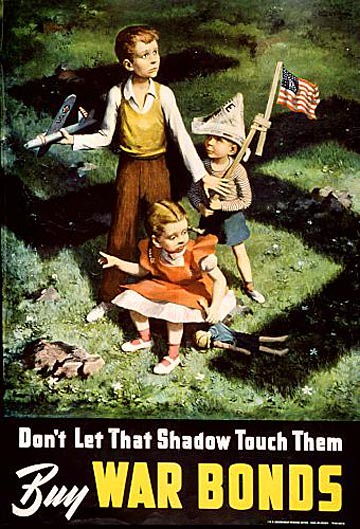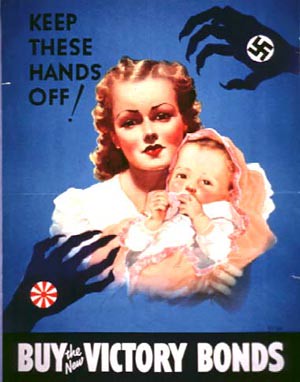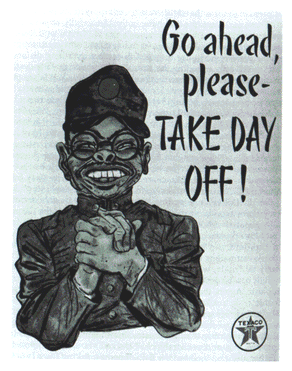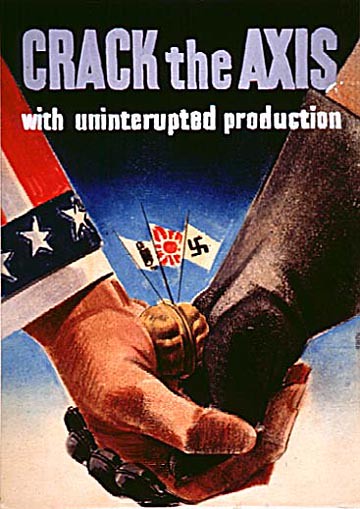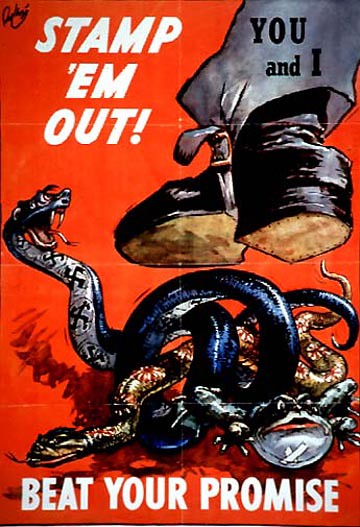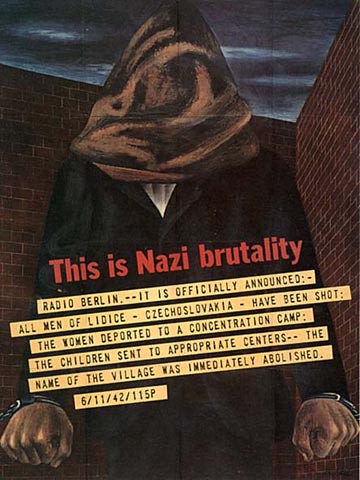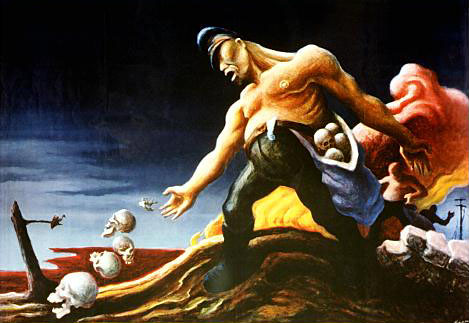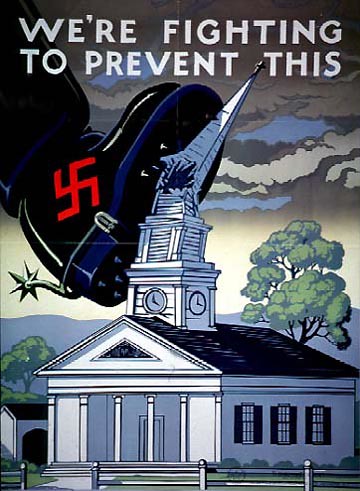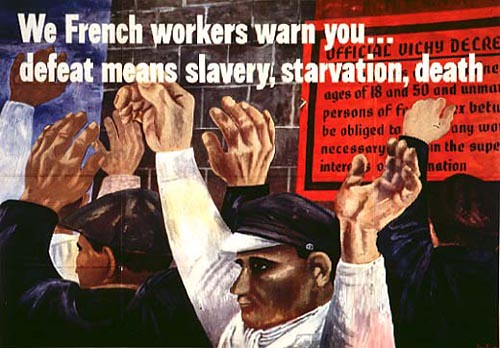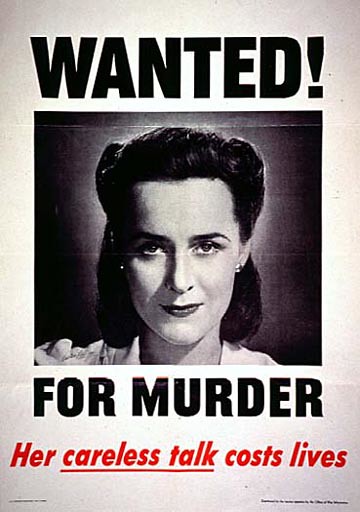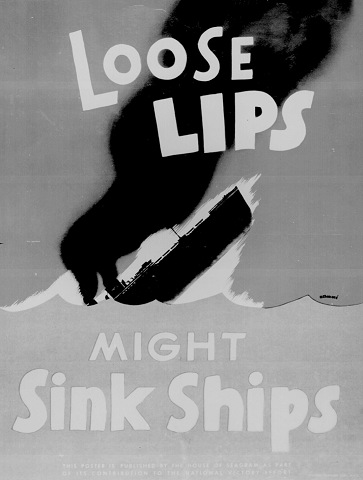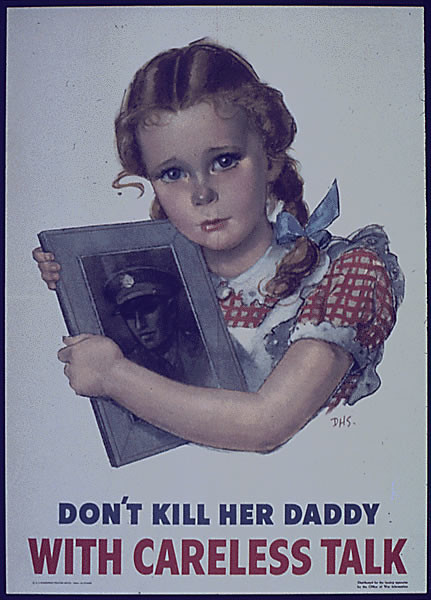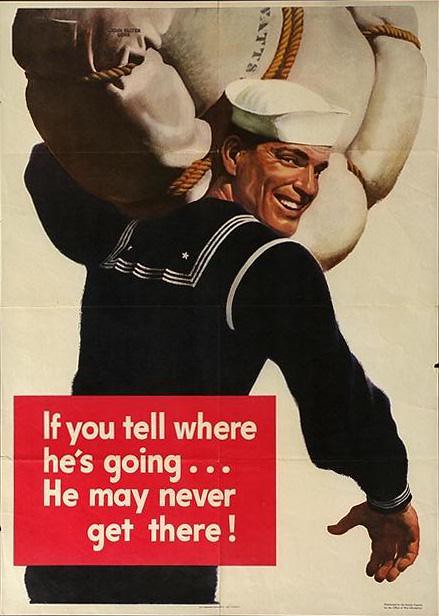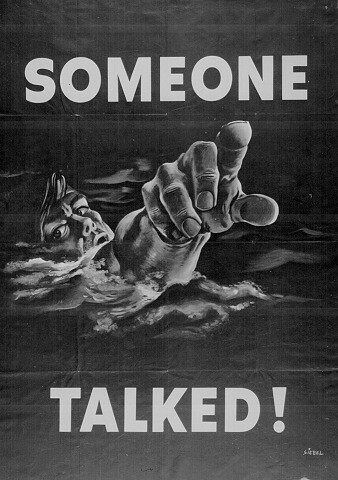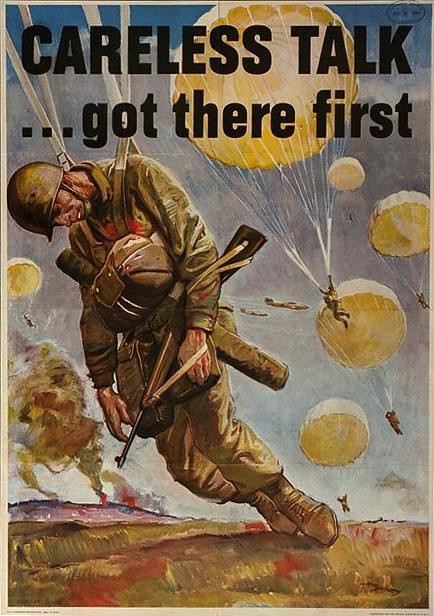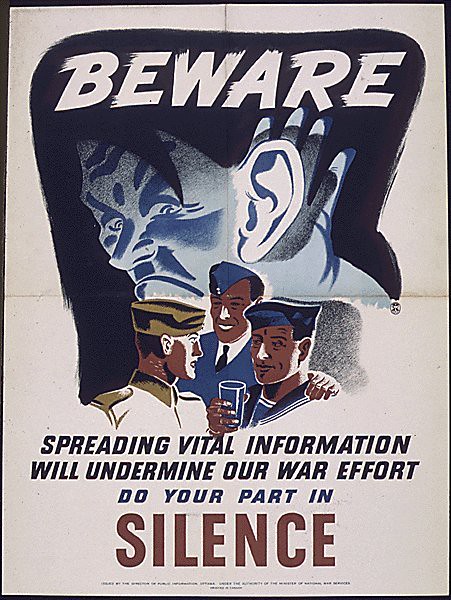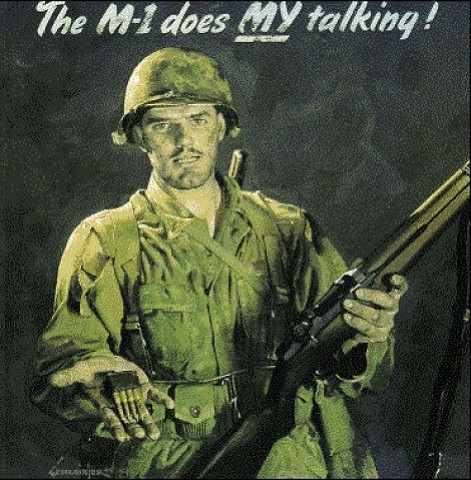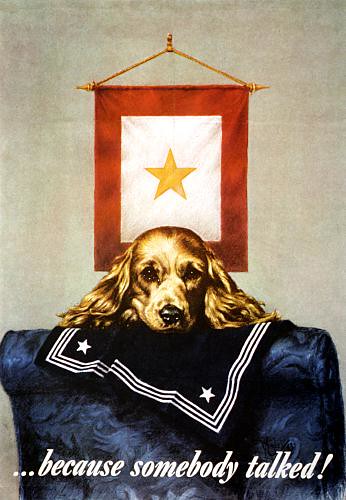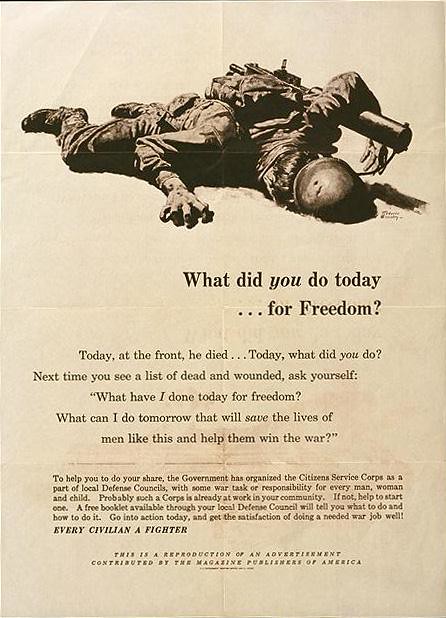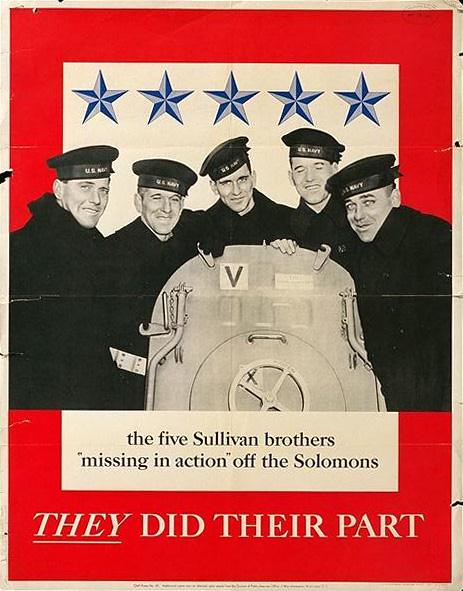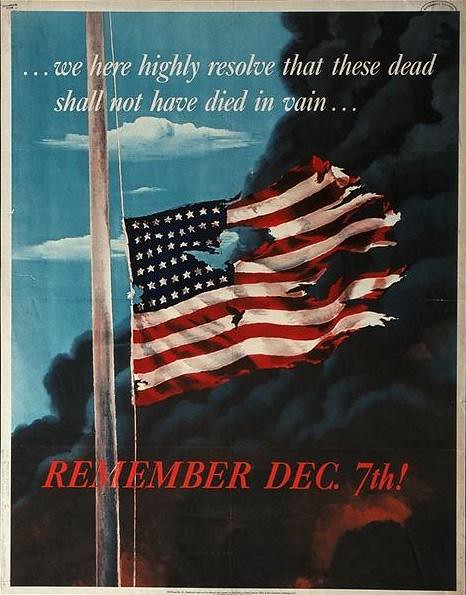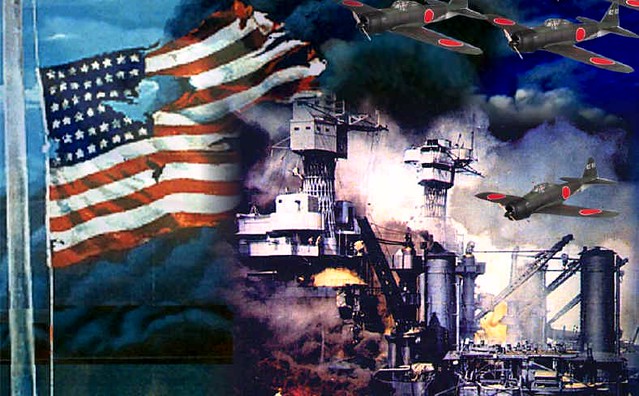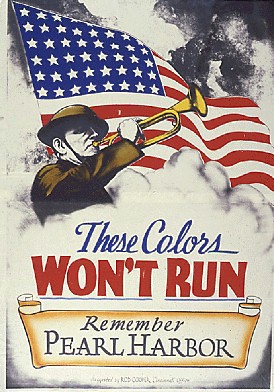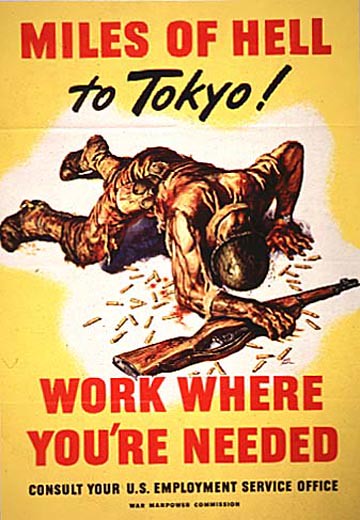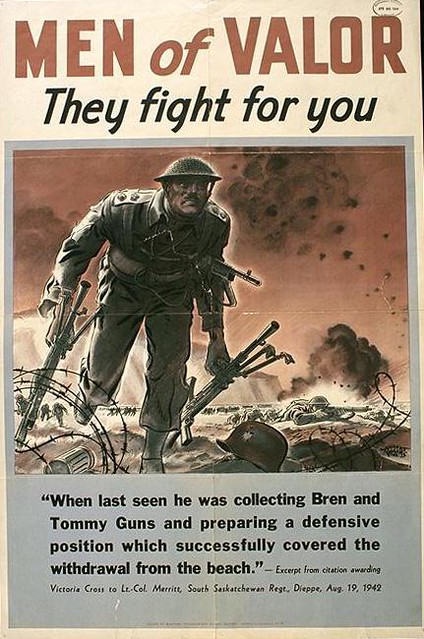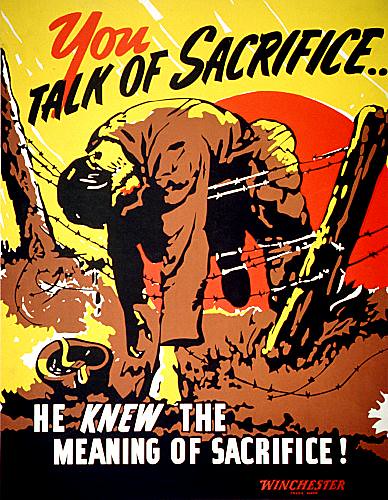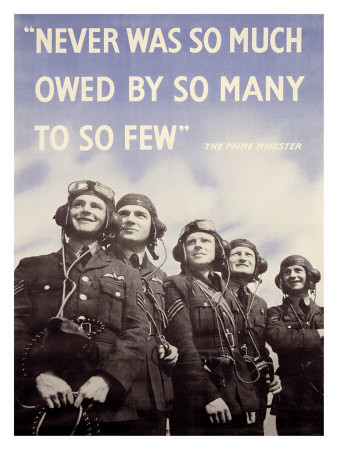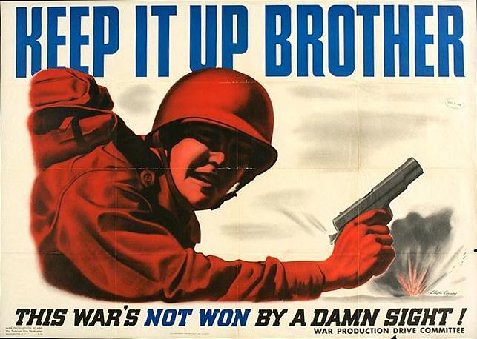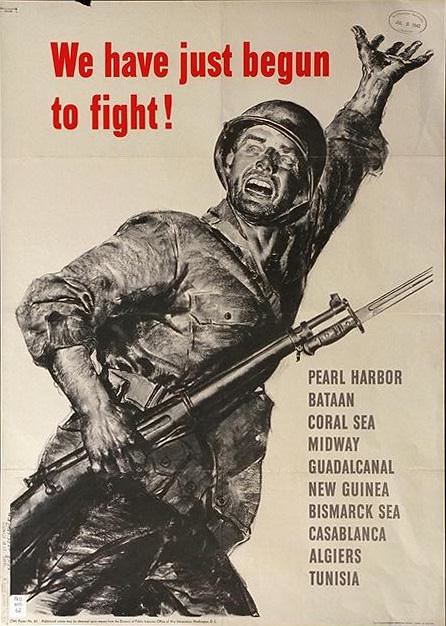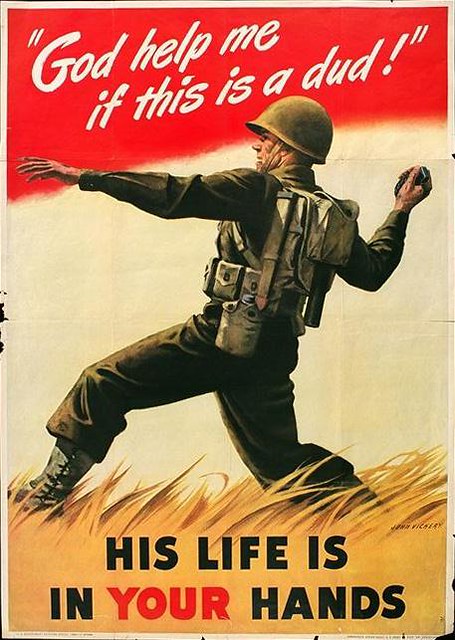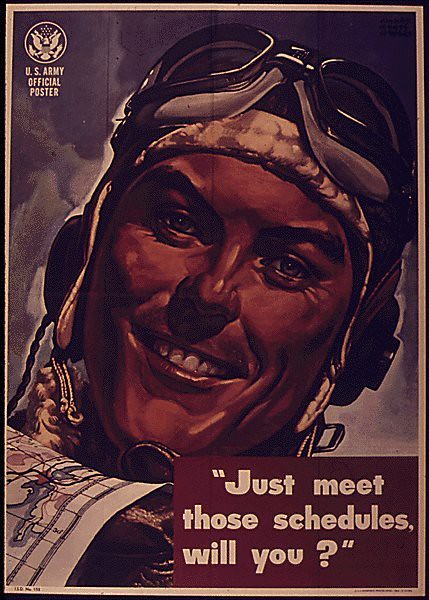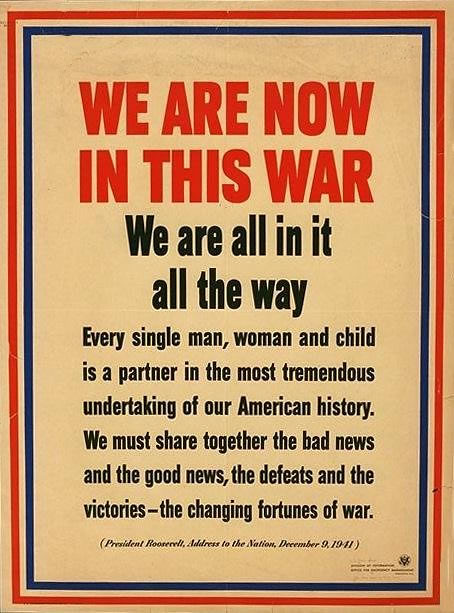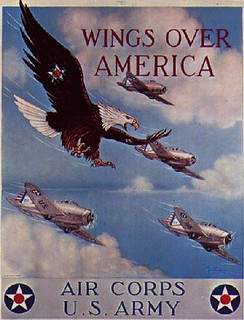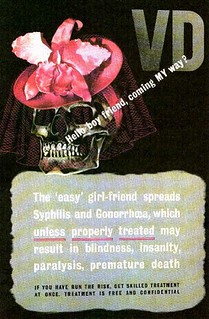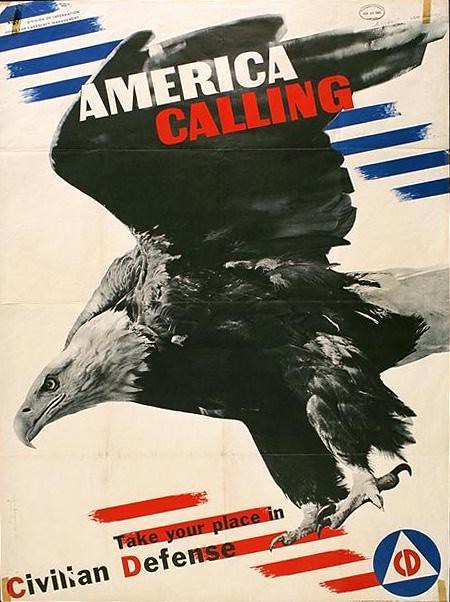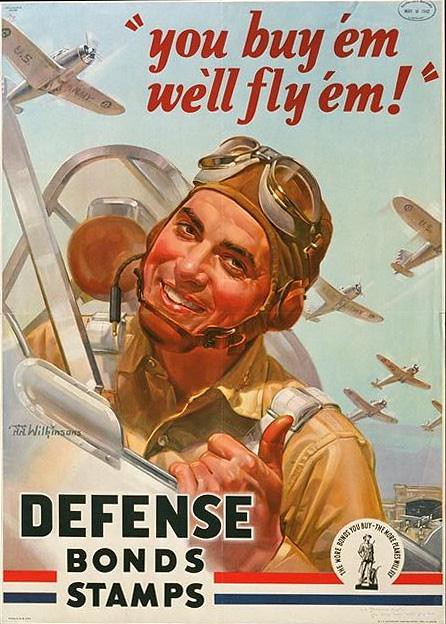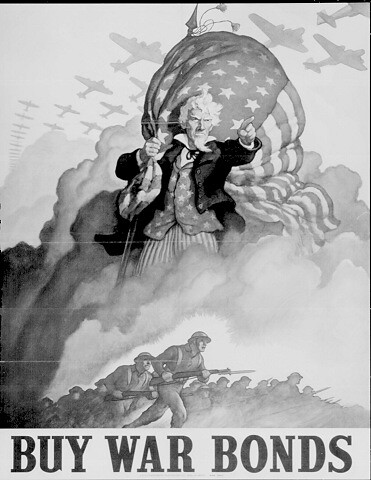World War II Posters
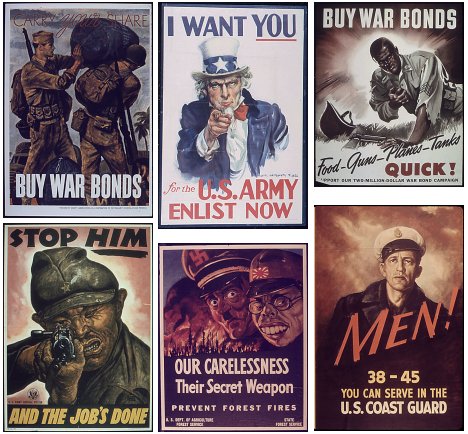
Drawing on themes of strength, fear, freedom, symbolism, carelessness and minorities – these World War II posters helped fuel the motivations of Americans during WWII.
World War II Posters: Strength
Accentuate the Positive, Eliminate the Negative,
Latch on to the Affirmative, Don`t Mess with Mr. In-Between.
Hit song, 1945, Music by Harold Arlen, Lyrics by Johnny Mercer
Masculine strength was a common visual theme in patriotic posters. Pictures of powerful men and mighty machines illustrated America`s ability to channel its formidable strength into the war effort. American muscle was presented in a proud display of national confidence.
World War II Posters: Women In The Workforce
These jobs will have to be glorified as a patriotic war service if American women are to be persuaded to take them and stick to them. Their importance to a nation engaged in total war must be convincingly presented.
–Basic Program Plan for Womanpower
Office of War Information
In the face of acute wartime labor shortages, women were needed in the defense industries, the civilian service, and even the Armed Forces. Despite the continuing 20th century trend of women entering the workforce, publicity campaigns were aimed at those women who had never before held jobs. Poster and film images glorified and glamorized the roles of working women and suggested that a woman`s femininity need not be sacrificed. Whether fulfilling their duty in the home, factory, office, or military, women were portrayed as attractive confident, and resolved to do their part to win the war.
World War II Posters: African Americans In The Military
We say glibly that in the United States of America all men are free and equal, but do we treat them as if they were? . . . There is religious and racial prejudice everywhere in the land, and if there is a greater obstacle anywhere to the attainment of the teamwork we must have, no one knows what it is.
Arthur Upham Pope, Chairman of the Committee for National Morale, in America Organizes to Win the War
During World War II, racial restriction and segregation were facts of life in the U.S. military. Nevertheless, an overwhelming majority of African Americans participated wholeheartedly in the fight against the Axis powers. They did so, however, with an eye toward ending racial discrimination in American society. This objective was expressed in the call, initiated in the black press for the “Double V”-victory over fascism abroad and over racism at home.
The Government was well aware of the demoralizing effects of racial prejudice on the American population and its impact on the war effort. Consequently, it promoted posters, pamphlets, and films highlighting the participation and achievement of African Americans in military and civilian life.
World War II Posters: Shortages & Conservation
Astronomical quantities of everything and to hell with civilian needs.
–Donald Nelson, Chairman of the War Production Board, describing the military view of the American wartime industry.
During the war years, gasoline, rubber, sugar, butter, and meat were rationed. Government publicity reminded people that shortages of these materials occurred because they were going to the troops, and that civilians should take part in conservation and salvage campaigns.
World War II Posters: Freedom
We look forward to a world founded upon four essential human freedoms. The first is freedom of speech and expression–everywhere in the world. The second is freedom of every person to worship God in his own way– everywhere in the world. The third is freedom from want . . . everywhere in the world. The fourth is freedom from fear . . . anywhere in the world.
President Franklin D. Roosevelt, Message to Congress, January 6, 1941
President Roosevelt was a gifted communicator. On January 6, 1941, he addressed Congress, delivering the historic “Four Freedoms” speech. At a time when Western Europe lay under Nazi domination, Roosevelt presented a vision in which the American ideals of individual liberties were extended throughout the world. Alerting Congress and the nation to the necessity of war, Roosevelt articulated the ideological aims of the conflict. Eloquently, he appealed to Americans` most profound beliefs about freedom.
The speech so inspired illustrator Norman Rockwell that he created a series of paintings on the “Four Freedoms” theme. In the series, he translated abstract concepts of freedom into four scenes of everyday American life. Although the Government initially rejected Rockwell`s offer to create paintings on the “Four Freedoms” theme, the images were publicly circulated when The Saturday Evening Post, one of the nation`s most popular magazines, commissioned and reproduced the paintings. After winning public approval, the paintings served as the centerpiece of a massive U.S. war bond drive and were put into service to help explain the war`s aims.
World War II Posters: Fear of the Enemy
Commercial advertising usually takes the positive note in normal times . . . But these are not normal times; this is not even a normal war; it’s hell’s ideal of human catastrophy [sic], so menace and fear motives are a definite part of publicity programs, including the visual.
–Statement on Current Information Objective
Office of Facts and Figures
Public relations specialists advised the U.S. Government that the most effective war posters were the ones that appealed to the emotions. The posters shown here played on the public’s fear of the enemy. The images depict Americans in imminent danger-their backs against the wall, living in the shadow of Axis domination.
World War II Posters: Crimes Against Humanity
Under their system, the individual is a cog in a military machine, a cipher in an economic despotism; the individual is a slave. These facts are documented in the degradation and suffering of the conquered countries, whose fate is shared equally by the willing satellites and the misguided appeasers of the Axis.
Government Information Manual for the Motion Picture Industry
Office of War Information
Many of the fear-inspiring posters depicted Nazi acts of atrocity. Although brutality is always part of war, the atrocities of World War II were so terrible, and of such magnitude, as to engender a new category of crime–crimes against humanity. The images here were composed to foster fear. Implicit in these posters is the idea that what happened there could happen here.
World War II Posters: Careless Talk
Words are ammunition. Each word an American utters either helps or hurts the war effort. He must stop rumors. He must challenge the cynic and the appeaser. He must not speak recklessly. He must remember that the enemy is listening.
Government Information Manual for the Motion Picture Industry
Office of War Information
Concerns about national security intensify in wartime. During World War II, the Government alerted citizens to the presence of enemy spies and saboteurs lurking just below the surface of American society. “Careless talk” posters warned people that small snippets of information regarding troop movements or other logistical details would be useful to the enemy. Well-meaning citizens could easily compromise national security and soldiers` safety with careless talk.
World War II Posters: Suffering and Sacrifices
The mortal realities of war must be impressed vividly on every citizen. There is a lighter side to the war picture, particularly among Americans, who are irrepressibly cheerful and optimistic. But war means death. It means suffering and sorrow. The men in the service are given no illusions as to the grimness of the business in which they are engaged. We owe it to them to rid ourselves of any false notions we may have about the nature of war.
Government Information Manual for the Motion Picture Industry
Office of War Information
To guard against complacency, the Government promoted messages that reminded civilian America of the suffering and sacrifices that were being made by its Armed Forces overseas.
World War II Posters: Symbolic and Humorous
War posters that are symbolic do not attract a great deal of attention, and they fail to arouse enthusiasm. Often, they are misunderstood by those who see them.
How to Make Posters That Will Help Win The War
Office of Facts and Figures, 1942
The Government tried to identify the most effective poster style. One government-commissioned study concluded that the best posters were those that made a direct, emotional appeal and presented realistic pictures in photographic detail. The study found that symbolic or humorous posters attracted less attention, made a less favorable impression, and did not inspire enthusiasm. Nevertheless, many symbolic and humorous posters were judged to be outstanding in national poster competitions during the war.
Pearl Harbor Warbirds offers the best Hawai‘i flight adventure tours available. Be immersed in the details of the infamous attack on Pearl Harbor and soar above the important sites that played a part in the “Day of Infamy.” Relive history as you retrace the steps of the Army and Navy airmen in the days following the bombing. Fly on some of the same routes the Japanese attackers used into the airfields at Wheeler, Kāne‘ohe and Bellows. There are many air tours in Hawai‘i, but only one warbird airplane flight. Located in Honolulu, Hawai‘i Pearl Harbor Warbirds provides a personal historical experience making it one of the best O‘ahu attractions.
Experience an immersive two hour adventure that allows you to relive history as a Naval Aviator and fly Pearl Harbor like it was on December 10th, 1941. Learn more about the Admiral’s Warbird Adventure.

